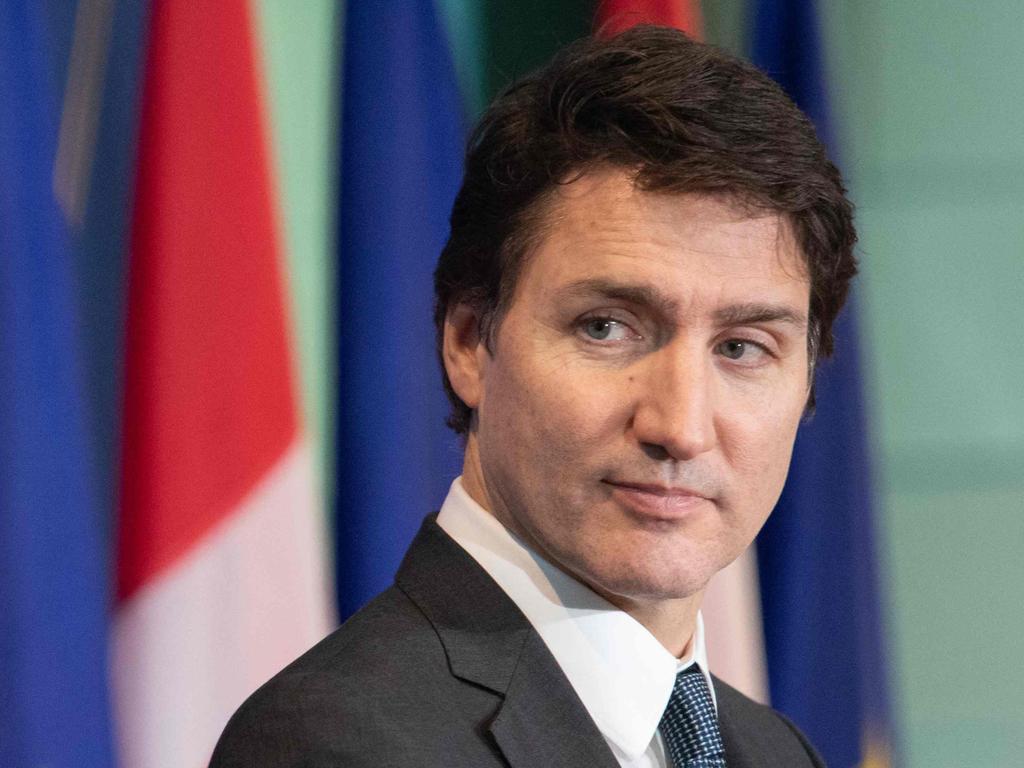
Canada put out the welcome mat for 465,000 new permanent residents last year. This year 485,000 and next year 500,000 will start mouthing the words to O Canada, which is even more cringe-worthy than our own national anthem.
In Australia, migrant arrivals increased 73 per cent to 737,000 from 427,000 arrivals a year ago. The largest group was temporary visa holders, with 554,000 people. That reflects a large number of students and work-specific entrants who will not become permanent residents but still need housing and support services.
In the last financial year, overseas migration contributed a net gain of 518,000 people to Australia’s population. Those figures are further complicated by the large number of migrants on bridging visas and backlogs in processing. But out there in what are largely Labor-held seats, there is growing concern that people are being left behind in favour of new arrivals.
For the first time, Canada’s population passed 40 million in June last year and hit 41 million two weeks ago. It is the country’s largest population growth in 70 years, all driven by net migration.
In the March quarter, Canada’s unemployment rate rose to 6.1 per cent. In contrast, Australia’s unemployment figure stands at 3.8 per cent. The prevailing view is that unemployment will begin to surge later this year, possibly above Treasury forecasts.
There are signs of social stress, some real, some imagined, in Canada. As with Australia, there is a profound housing shortage in major cities. Housing affordability is creating a divide between haves and have-nots that will confound politicians for decades. Political parties tend not to discuss housing policy because it is fraught and any attempt at intervention will create as large a group of losers as it might winners. It is a vexed issue, becoming more complicated by the day.

The Trudeau government is going into its ninth year, the past four in minority. The next election is not due until October next year but the whiff of putrescence around the government has become a room-clearing stench, with polling putting Justin Trudeau’s progressive Liberal Party at 25 per cent. Votes are shifting right to the Conservative Party of Canada and polling projections reveal the centre-right party would win majority government if an election were held any time soon.
There is a strong sense that Trudeau is on a political death march with voters reaching for the baseball bats. If British Prime Minister Rishi Sunak and the Tories are galloping to political oblivion then Trudeau is two out and two back gathering pace.
Australia and Canada share a rich and largely successful history of immigration. The value of immigration is broadly understood. Both countries provide shining examples of multiculturalism compared with the European experience. Proportionately, Canada has taken more UNHCR-resettled refugees in the past 20 years than any other country, with Australia running a close second.
But refugees take up a mere fraction of total migrant intake. More than half of those who arrived to take up permanent residence in Canada did so under the various economic migrant programs. Another 120,000 will come from family reunion programs.
As in Australia, an increase of migrants arriving in Canada amid a rental crisis and a housing shortage has raised alarm. Migrants tend to take up residence in Ottawa and Toronto with other parts of the country, like Vancouver, considered too expensive to live in or too far away to provide employment opportunities. In Australia, Melbourne and Sydney feel the squeeze in housing and infrastructure while the regions go without.
There will always be xenophobic expressions opposed to immigration but some of the loudest criticisms of the Trudeau government’s immigration policy have come from first and second-generation Canadians who are feeling the pinch in employment and the cost of housing. They take to TikTok and YouTube to express their concerns. They support immigration and the broad tenets of multiculturalism. There is a growing sense of frustration that the Trudeau government has stopped listening. Most Canadians believe the government has got immigration wrong.
China and India continue to provide the highest proportion of permanent migrants in Australia, with those across the Tasman taking up third place. Of Canada’s 485,000 arrivals last year, 27 per cent hailed from India while 7 per cent came from China, with Nigeria, Afghanistan and The Philippines combining to make up 15 per cent of the total. During a lockdown protest, elements of the trucking industry called for strikes but most of Canada’s truckies are of Indian heritage and chose to earn a quid instead.
Global markets remain pessimistic and Canada’s unemployment rate is likely to rise. Official forecasts have come and gone below actuals for the past six months. Treasury officials in Australia expect unemployment to rise only slightly to 4.5 per cent in the first quarter of next year. In times of tepid economic growth, with all manner of potential economic calamities foreseen or unforeseeable possible, outlooks are subject to great volatility, but by the time governments dial down immigration numbers it’s often too little, too late.
The trick to a successful immigration policy is not counted in raw numbers, net migration or population growth. It is determined by public confidence. When that begins to erode, social and economic consequences abound.
The Trudeau government has gone down a pathway Canadians may live to regret long after their cos-playing PM has put his political cue in the rack.
The Albanese government should be watching closely before it has to confront its own too little, too late adjustments to immigration policy.








High immigration numbers are causing social tensions and political problems in Canada, and there are signs similar pressures will beset Australia, whose net migration figures are similar to those in the Great White North.